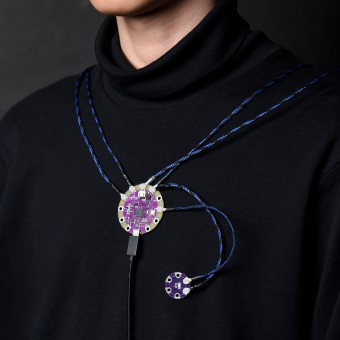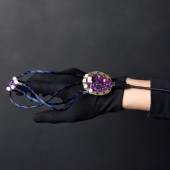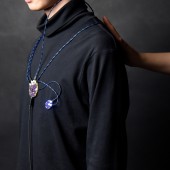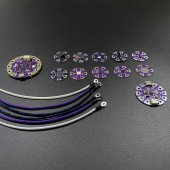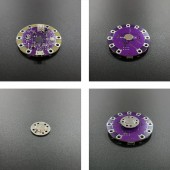DESIGN NAME:
Openwear
PRIMARY FUNCTION:
Wearable Prototype Toolkit
INSPIRATION:
Common wearable circuits often need to be fixed using sewing, which is very cumbersome. To solve this problem, we took inspiration from magnetic buttons. We have embedded magnets in the back of the PCB to fix it using magnetic force.
UNIQUE PROPERTIES / PROJECT DESCRIPTION:
Openwear is a toolkit for building rapid wearable prototypes. It includes a modified Lilypad USB development board, 11 newly designed modules, and quick connecting cables. This kit facilitates rapid prototyping by enabling quick attachment and connection and allows users to directly build and test prototypes on the intended substrate like clothes.
OPERATION / FLOW / INTERACTION:
1. Building the First Circuit Prototype: Select modules based on design requirements and assemble them on a flat surface for initial circuit testing and debugging. 2. Continuous Testing and Adjustment of the Circuit: Reconfigure module positions on the body for testing purposes. 3. Building the Final Circuit: Sew components directly onto fabric using conductive yarn or utilize sewing magnet fixing pads as an alternative method. This ensures flexibility and ease of removal.
PROJECT DURATION AND LOCATION:
The project started in August 2023 in Ningbo and finished in January 2024
FITS BEST INTO CATEGORY:
Product Engineering and Technical Design
|
PRODUCTION / REALIZATION TECHNOLOGY:
For the modules, we have designed 11 different modules with input or output chips contained on each module. Each module has six 3mm diameter pins. For quick fixing, we fixed a 10mm diameter magnet on the bottom of the development board and modules, which works with the magnetic fixing pads to attach to clothes. For quick connects, we used O-connectors and bolts, which work well with the 3mm pin sizes on the PCB.
SPECIFICATIONS / TECHNICAL PROPERTIES:
Development board size is ϕ50*1mm, module size is ϕ25*1mm.
TAGS:
Hardware, Electronic, Toolkit, Wearable, E-textile
RESEARCH ABSTRACT:
The success of the LilyPad has resulted in the creation of various development boards, such as the more compact TinyLily and the Circuit Playground with many sensors. However, these variations only modify the dimensions or integrate sensors, without modifying the Lilypad's method for constructing wearable circuits. This method presents a challenge in prototyping wearable circuits: sewing processes are time-consuming and set a high threshold for beginners. Furthermore, the troubleshooting process in wearable circuit prototyping often requires resetting and resewing. Once the development board is integrated into the fabric, the complexity of the debugging code also increases proportionally.
CHALLENGE:
The biggest challenge in the whole research was to achieve a rapid fixing and connection of the PCB. We tried a variety of methods including pins, buttons, velcro, and finally we chose to use magnets with O-connectors, which had not been used before.
ADDED DATE:
2024-02-25 16:13:53
TEAM MEMBERS (4) :
Leijing Zhou, Xin An, Yiqing Zhang and Yang Mao
IMAGE CREDITS:
Leijing Zhou, 2023.
|



